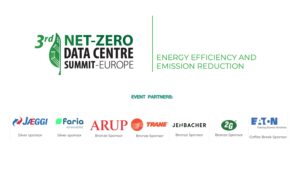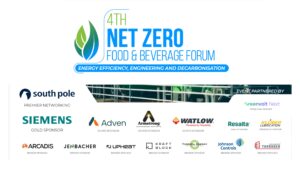The future of green hydrogen in Europe hinges on a choice. This choice will influence billions of euros in investment decisions and set the hydrogen supply chain for Europe for the future. It is b/w whether to deploy local Hydrogen Valleys or deploy the massive European Hydrogen Backbone. For industry, knowing the pros and cons is important for making informed, long-term decisions about it. One is providing short-term, local solutions, the other is giving rise to an integrated, continental market. In this article, you will discover how Hydrogen Valleys help, we will also articulate the vision for the European Hydrogen Backbone, & explore the strategic implications.
Starting Local: How Hydrogen Valleys Fit into Europe’s Green Future
Developing a massive energy system from scratch is a large undertaking. In this respect, most experts favor a bottom-up approach and initiate the hydrogen economy with high-density, self-sufficient local ecosystems. So, this section will examine the Hydrogen Valleys concept, how they work in practice, and the notable challenges:
So, What Exactly Is a Hydrogen Valley?
Think of Hydrogen Valleys as a whole, real-world laboratories for the hydrogen economy. They are comprehensive regional initiatives in which every component of the hydrogen value chain co-exists. It also illustrates “sector coupling” through the connection of renewable electricity supply to end-users in industry. It includes chemical production or freight transportation. A port valley, for example, could use offshore wind energy to produce hydrogen to power shipping and local trucking.
This type of approach satisfies the traditional “chicken-and-egg” problem completely. Valley projects are brought together by signed contracts, a local green energy supplier, an electrolyzer operator, and an industrial offtaker. These create both demand and supply to grow together. This reduces the risk of the up-front and high cost, and concretizes a roadmap to success.
How the EU is Spurring the Development of Hydrogen Valleys
The European Union firmly supports Hydrogen Valleys as one of its core pillars of energy policy. This is under the REPowerEU strategy. The EU aims not just to finance projects but also to trigger an indigenous hydrogen economy. This is with a 10 million-tonne target of renewable hydrogen in 2030. The Clean Hydrogen Partnership, a core public-private entity, takes the lead in identifying and financing potential valleys on the continent.
This targeted funding is the heart of EU policy for the financing of hydrogen infrastructure. Most significant, perhaps, is that the policy calls for consortia of companies to bid, bringing public funds and private investment together. This makes it much more feasible for individual firms to learn how to invest in European hydrogen schemes. This is because the collective financial risk provides a secure and appealing investment climate to initiate early projects.
More Than Just Energy: Sparking Local Jobs and Innovation
Hydrogen valleys go beyond the generation of energy. They are truly a key initiator of the regional upturn of the economy. The opening of a valley draws specialised workers and manufacturers. This attracts high-skilled jobs in the construction of electrolyzers, the production of fuel cells, and the creation of new materials. Due to such an activity, the energy transition takes one step further and gets directly into the center of local communities.
In addition, the valleys are thriving hubs of innovation. The valley’s massive industrial-scale electrolyzers, for instance, can be used to offer ancillary services to the grid. It includes frequency regulation, generating new revenues. The data gained by daily operational experiences passes on invaluable information to universities and research centres. This can, in turn, advance the technology and enable Europe to develop a competitive hydrogen supply chain.
From Pilot to Powerhouse: What’s Holding Hydrogen Valleys Back?
Pressing Hydrogen Valleys out of small pilots into full-scale commercial operation is an enthralling venture. However, it is not without challenging technical and financial issues. The renewable energy sources are intermittent, which is the greatest challenge. Electrolyzers work optimally with consistent electricity; however, wind power and solar energy come and go. This transition means developers will have to construct costly, oversized renewables or purchase costly, large-scale hydrogen storage.
The other problem is its relative distance to a broad hydrogen network. When one of its big industrial customers reduces its off-take, the valley has no one to sell its hydrogen to, and local market fluctuations can target the valley. These valleys must have a connection to the European Hydrogen Backbone of the future, efficiently to succeed in their future development.
Thinking Bigger: The Vision for a European Hydrogen ‘Backbone’
While valleys focus on local ecosystems, a parallel approach offers an entirely more grandiose, top-down vision. The European Hydrogen Backbone initiative aims to create a single, continent-wide network to transport hydrogen freely across frontiers, similar to the natural gas network today. This section elaborates on the scale of this project, its compelling economic benefits, and the monumental challenges it poses:
Scope and Scale of the European Hydrogen Backbone Project
The European Hydrogen Backbone (EHB) project suggests a wide, pan-European hydrogen network. It is supported by a group of more than 30 European gas transmission system operators. Their vision imagines an interconnected hydrogen network of nearly 60,000 kilometers of pipeline by 2040. It will connect the continental industrial backbone to regions with access to affordable, large-scale renewable hydrogen.
A core feature of the EHB plan is the effort to repurpose the existing gas pipeline. The estimate is that 60% of the new hydrogen network can be repurposed from current gas pipeline networks. This is without needing to invest huge amounts of time and money into building anew. The EHB rollout is phased, with prioritization given to energy corridors by 2030, connecting most key supply and demand hubs first.
Cost-Efficiency and Market Integration Benefits of the Backbone
The European Hydrogen Backbone’s strongest economic case is its unique cost-effectiveness at scale. To transport quantities of energy across large distances, there needs to be a particular hydrogen pipeline, which is definitely the lowest-cost option to pursue. This kind of infrastructure unlocks what is known as “locational cost advantage.” To give one example, it allows German industry to import and utilize green hydrogen based directly on low-cost and abundant solar power in Spain.
This interconnection then forms a fully integrated and competitive market for Europe. A continental grid encourages competition among hydrogen producers, hence reducing prices for industrial buyers. It also significantly enhances the energy security of Europe through the diversification of energy supply. The market integration provided by the European Hydrogen Backbone is therefore essential in making hydrogen an accessible and secure commodity for industries around the world.
Enabling Policies and Cross-border Cooperation for EHB
A pioneering project like the European Hydrogen Backbone truly only requires a harmonized and firm policy response from the EU. A key component of this is having explicit provisions for the cross-border transport of hydrogen. This involves particularly applying “unbundling” principles. These separate the pipeline ownership from the sale of the hydrogen. Consequently, this requirement rules out monopolies. It also offers open, balanced access to producers.
In addition, the European Hydrogen Backbone is premised on a harmonious cooperation between regulators & national governments. As the pipes crisscross the borders, countries must coordinate everything from approval procedures to security technical levels. In the absence of such high degrees of political and regulatory harmonization, the vision of a single continental grid can very easily become stuck in bureaucracy. So, international collaboration is as important as the hydrogen pipeline itself.
Real-world Momentum and Obstacles in Hydrogen Backbone Implementation
There is palpable momentum in favor of the European Hydrogen Backbone. The consortium has published detailed maps of the intended corridors, and some demonstration projects have already started. To give just one example, the H2Med pipeline, a politically supported high-profile energy corridor by Portugal, Spain, France, and Germany, is a concrete stepping stone towards the implementation of the EHB. This is a powerful show of policymakers’ and industry’s commitment.
But the project faces mammoth challenges. The technical process of evaluating, certifying, and actually re-purposing thousands of kilometers of decommissioned pipes is enormously complicated. Aside from the engineering, obtaining permits for a single hydrogen pipeline through several jurisdictions is a notoriously sluggish and complicated procedure. Most of all, it takes creative financing structures and considerable public-sector backing to de-risk the investment that mobilizes the tens of billions of euros in initial capital.
Strategic Consequences: Navigating a Two-Speed Hydrogen Economy
The concurrent development of European hydrogen valleys and a continental backbone leads to a complex, two-speed hydrogen economy for Europe. This leaves the investors and industrial leaders with a scenario where they have to look beyond one model and analyze their interaction. This section looks into the strategic consequences that follow from this dual approach in direct response to the very essence of hydrogen valleys vs backbone pros and cons:
The Phasing Dilemma: How Valleys Will Evolve into Backbone Nodes
The biggest question in the long term is how exactly independent Hydrogen Valleys will become interconnected nodes on the European Hydrogen Backbone. This shift is not natural. In reality, pipeline builders will favor connecting valleys that have the greatest, most consistent demand and are located on the most economically sound paths. This implies new valleys now have to be “Backbone-ready.”
This entails building them with harmonized technical specifications and planning for future pipeline connection points from day one. Additionally, for existing valleys, the task will be to retrofit their infrastructure to the backbone standard. Ultimately, this phasing problem leaves in its wake a competitive landscape where only the best-designed and best-located valleys will receive a highly coveted connection to the continental grid.
The Future of Pricing: How the Backbone Will Shape Hydrogen Market Liquidity
The intersection of these two systems will result in an intriguing pricing dynamic. The initial price of hydrogen in a Hydrogen Valley will be high, based on the regional cost of production and fixed by contracts between limited parties. But as the European Hydrogen Backbone extends to additional regions, it will establish a liquid, traded market where hydrogen is transferred from low-cost production hubs to high-demand locations.
This will ultimately result in more open, commodity-form “hub pricing,” as exists in the natural gas market today. The advent of this lower, market-determined price will impose tremendous commercial pressure upon premature, high-cost Hydrogen Valleys. Consequently, their ultimate survival will rest on their ability to conform and reduce their cost of production before the backbone reaches their doorstep.
Rethinking Resilience: The Security of Supply in a Hybrid Network
The dual-track policy provides a distinctive, hybrid model of energy security. A decentralized system of autonomous Hydrogen Valleys offers high resilience to large-scale, systemic failures. If one of the major hydrogen pipelines on the backbone fails, these valleys can keep their local industries supplied uninterrupted. This model provides high local security.
Conversely, the European Hydrogen Backbone ensures robustness against local issues. In case the renewable energy source of a particular valley breaks down or the electrolyzer requires repairs, the backbone would be able to supply hydrogen from another location on the continent continuously. This yields high system-wide security. Hence, the best approach for Europe is not to choose one model. It is to build a hybrid network, taking advantage of the complementary security advantages.
The Investor’s Dilemma: Early-Mover Profits vs. Long-Term Utility Returns
This two-speed growth poses an evident dilemma that deals directly with how to invest in European hydrogen projects. Investing in a Hydrogen Valley represents a venture-capital-style bet. The risks are greater because of technology uncertainty and market disconnection, but so are the returns. To succeed is to capture a whole local market and benefit from the “early-mover” power.
On the other hand, investing in the European Hydrogen Backbone is the equivalent of investing in a regulated utility. It has long-term, stable returns defined by regulated tariffs, but with significantly lower margins. The risk is reduced because it has strong political support and assured demand. Investors therefore have to choose which risk-return profile suits their strategy: the high growth potential of pioneer valleys or the predictable, stable income of the continental hydrogen infrastructure.
To Sum Up
Hydrogen Valleys versus the European Hydrogen Backbone is not about taking a bet on the winner. The two complement each other; valleys are short-term incubators of significance, and the Backbone provides long-term connectivity to establish a single market.
For industrial leaders, the winning formula is to capitalize on the immediate advantage of local valleys while positioning for eventual integration into the continental grid. This is not a wager on one, but a strategy for both. To learn more about these strategic choices, join industry leaders and experts at the forthcoming 2nd Industrial Energy Management Summit on 8-9 October 2025 in Berlin, Germany. Discover more!




